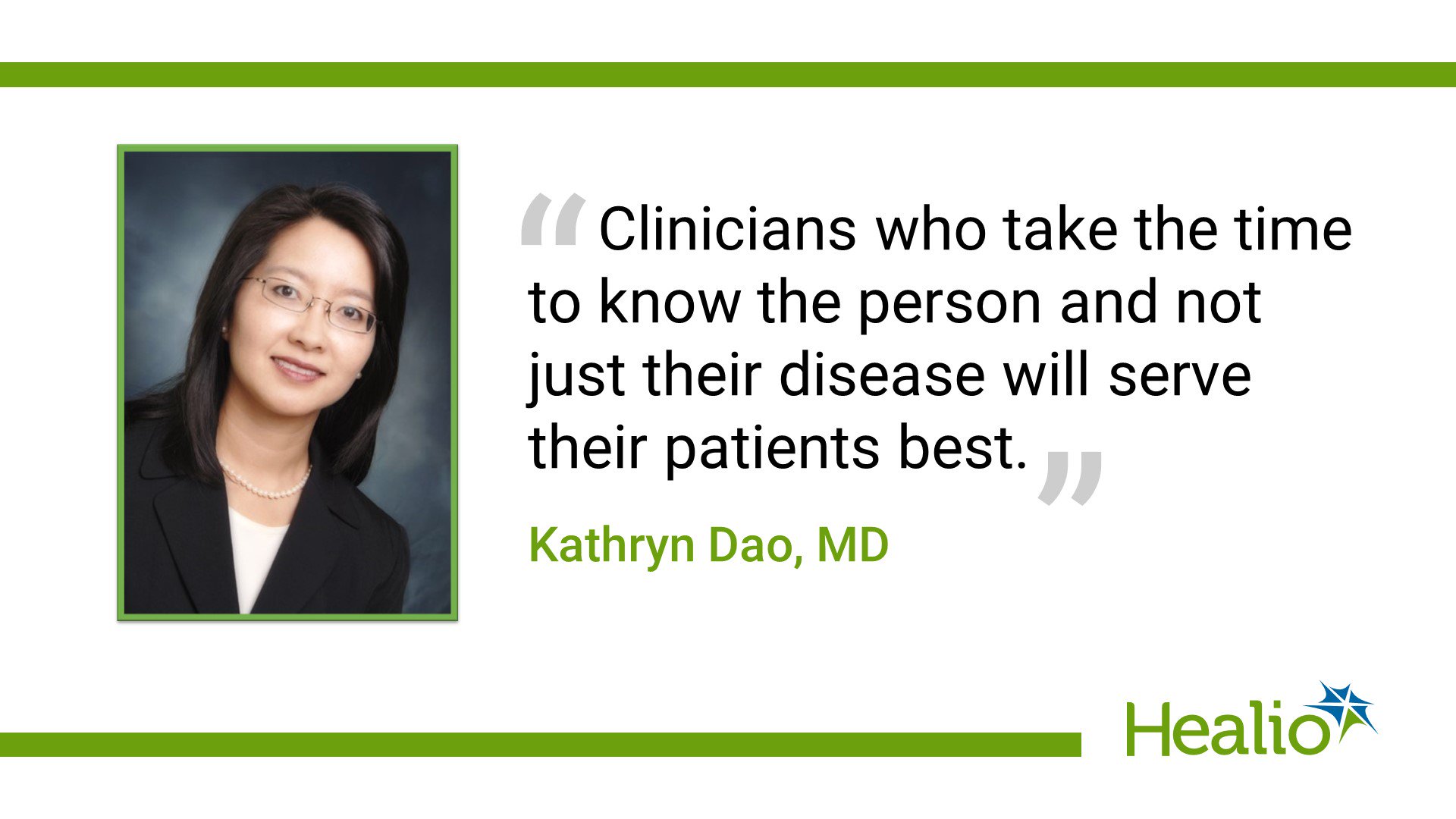Q&A: Rheumatologists encouraged to address gender disparities in RA
Key takeaways:
- Women are three times more likely to have rheumatoid arthritis than men, yet gender disparity knowledge is limited.
- Understanding the needs of women with RA plays an essential role in developing treatment plans.
Although it is still unclear why gender differences exist in rheumatoid arthritis, it is known that the disease is more prevalent among and tends to be more painful for women.
According to a 2019 study published in The Scientific World Journal, women are three times more likely to have RA, and they often experience more severe symptoms and poorer quality of life.

To learn more about gender-based health care disparities in RA, Healio spoke with Kathryn Dao, MD, an associate professor in the department of internal medicine and the division of rheumatology at UT Southwestern Medical Center.
Healio: What are the current health care disparities that exist between men and women in the diagnosis and treatment of RA?
Dao: RA affects women and men differently; the disease is more aggressive, occurs earlier and afflicts women three times as often compared with men. These gender differences may be related to hormonal, genetic (X-linked) or physiologic responses to environmental factors. Women may experience a delay in diagnosis as some of their symptoms may be dismissed as somatization disorders.
Treatment effects may differ as well. Some studies suggest achieving remission is more difficult for women with RA; it is unclear if this is due to a biological difference between men and women or if it is related to provider bias that influences therapeutic selection as women with RA may have other comorbidities, including fibromyalgia, that complicate disease assessment.
Healio: What specific gender-related factors, such as hormonal influences, should rheumatologists consider when treating female patients?
Dao: Hormones have a complex relationship with the immune system. They have been shown to affect RA disease activity as studies have noted a higher incidence of RA among women during the postpartum period and around menopause. Additionally, disease activity may improve during pregnancy.
Because RA may affect women of childbearing potential, assessing reproductive desire by asking the “One Key Question,” — an online tool that starts the conversation about if, when and under what circumstances people want to get pregnant and have a child — “Would you like to become pregnant in the next year?” is essential to help guide treatment as some medications are not compatible with pregnancy and about 50% of pregnancies are unplanned. Fortunately, we do have great options to treat RA for patients who are pregnant or want to become pregnant.
Healio: What challenges or barriers do women with RA face in terms of timely diagnosis and access to appropriate treatments and how can health care providers address these challenges?
Dao: Women may find their symptoms dismissed or attributed to a psychosomatic disorder, especially if preliminary testing is unrevealing (eg, negative rheumatoid factor or cyclic citrullinated peptide antibodies). Twenty percent of patients with RA are seronegative, but these patients still have evidence of inflammatory arthritis by physical exam or imaging. Primary care providers are the first clinicians from whom patients seek care; as rheumatologists, we need to do a better job of educating the doctors, nurse practitioners and physician assistants on physical exam findings of RA and the next steps to take to complete a full evaluation of patients with musculoskeletal symptoms. Patients with persistent, unexplained joint pain and swelling should consider evaluation by a rheumatologist despite “normal” testing by their PCP.

Healio: In what ways can rheumatologists tailor treatment plans to better meet the needs of women with rheumatoid arthritis?
Dao: Rheumatologists are considered the ultimate internists. While we assess and treat the patient’s disease, it is often necessary to understand the patient’s circumstances: What work do they do? What is their home environment like? Is access to care a problem? It might be difficult for a woman who has several young children to come to her appointments, or a woman who is in an abusive relationship to speak while her husband is in the exam room. Clinicians who take the time to know the person and not just their disease will serve their patients best. This is truly personalized medicine.
Healio: How can rheumatologists collaborate with other health care professionals, such as gynecologists or PCPs, to provide multidisciplinary care for women with RA?
Dao: Rheumatologists should continue to be involved in their patient’s care during pregnancy. There is a misconception that pregnancy will result in remission off of medications. Although many patients do see improvement in their disease with pregnancy, there are some who flare. Disease flares are associated with adverse pregnancy outcomes such as premature births and lower birth weights.
For patients who do not desire pregnancy but require medications that are teratogens, collaborating with the gynecologist or PCP to provide effective birth control is important.
Healio: How can medical training programs better prepare future rheumatologists to address these gender disparities?
Dao: Gender disparities exist in many rheumatic diseases as seen by the greater proportion of female to male patients affected by these diseases. It is a matter of raising awareness by teaching this as a part of the fellowship curriculum and also acknowledging that gender bias exists among providers.
Healio: What would you like future research to focus on in terms of gender-based disparities in RA care?
Dao: There should be more funding for research to understand why gender disparities exist, what impact they have on patients and how to better treat our patients because of these gender differences.
References:
- Intriago M, et al. ScientificWorldJournal. 2019;doi:10.1155/2019/8103812.
- The gender gap: How RA differs in women.
https://www.webmd.com/rheumatoid-arthritis/ra-and-women. Accessed Jan. 24, 2024. Published Nov. 2, 2022. - Power to Decide: One Key Question. Available at: https://powertodecide.org/about-us/faqs. Accessed Feb. 15, 2024.

